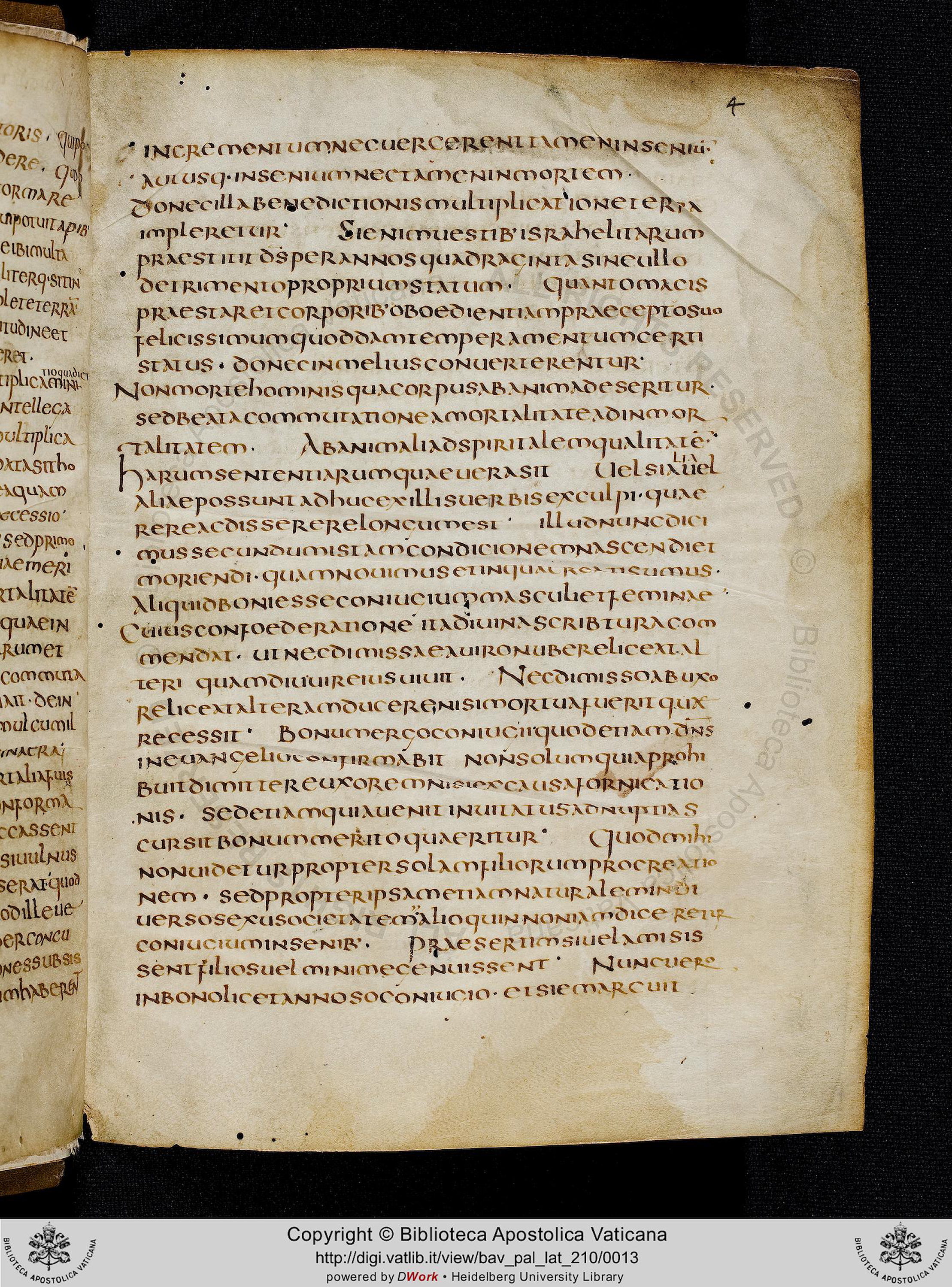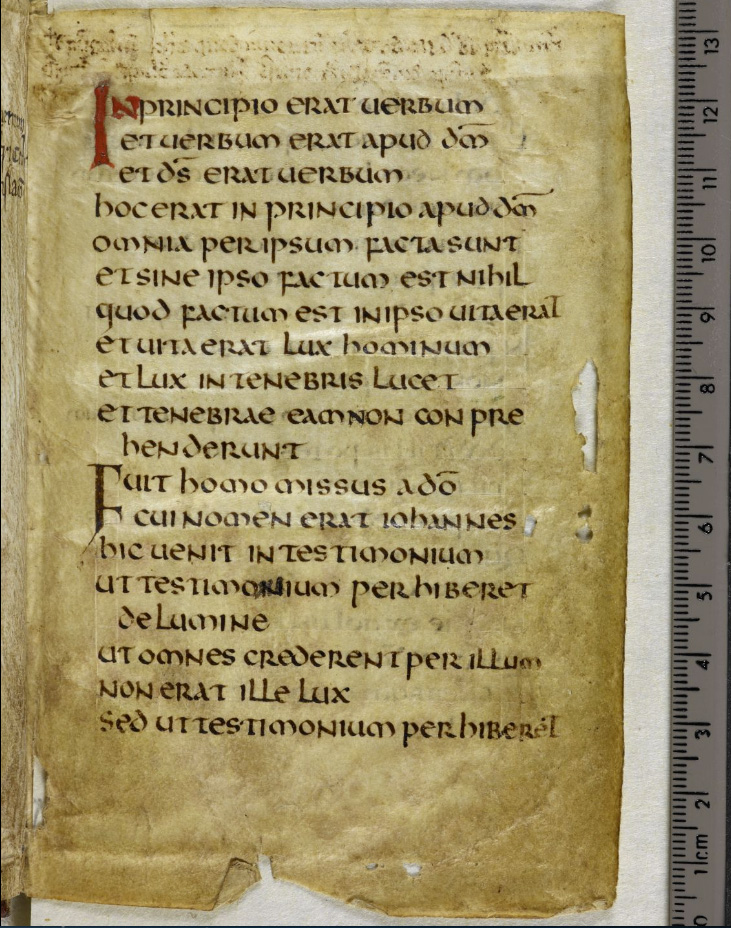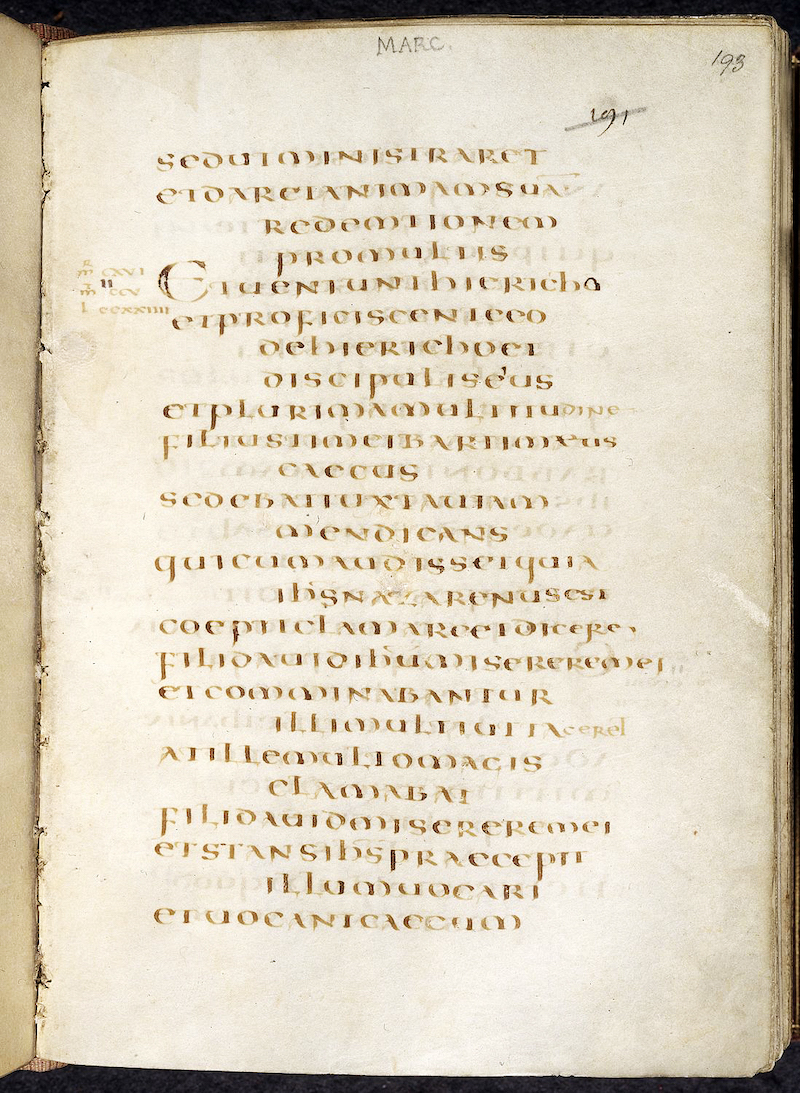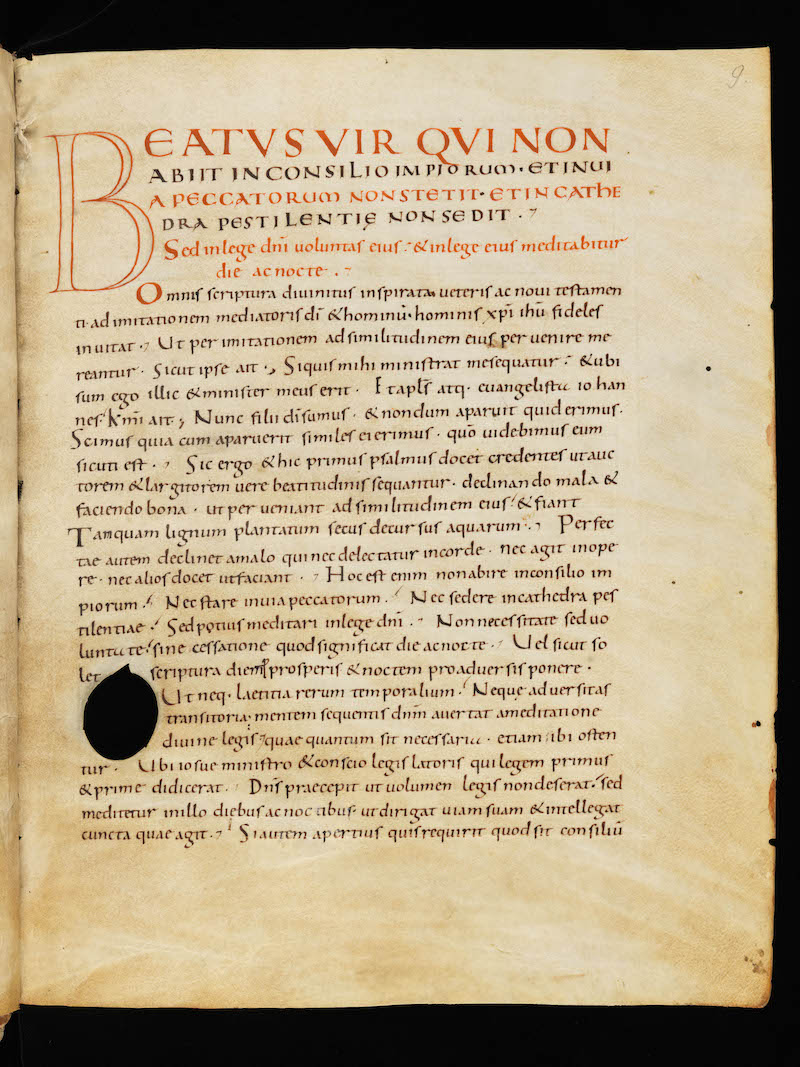
Uncial, 7th century
-
Title
Augustine, Opuscula -
Text
Augustine, De bono coniugali, 2.2 -
Language(s)
Latin -
Writing System
Roman -
Script(s)
Uncial -
City
Vatican City -
Repository
Biblioteca Apostolica Vaticana -
Shelf Mark
Pal. Lat. 210, fol. 4r -
Century
7th century -
Year Range
595-605 -
Place Of Origin
Italy -
Provenance
In England or in one of the English missions to the Continent during the 8th century. With Gerwald, palace librarian to Louis the Pious in the 9th century, and bequeathed by him to the Abbey of Lorsch in 860. In the Palatine Library in Heidelberg in the 16th century, and then with that whole library to the Vatican in 1623. -
External Facsimile
This manuscript of Augustine's minor works is written in a fully-developed Uncial of the middle period. The script has achieved its characteristic roundness and spaciousness, without the mannerism and exaggerated curves of late Uncial. In addition to the rounded aspect of the script as a whole, signs of a date which is neither late nor early in the lifespan of the script are the d whose stem leans at about a 45-degree angle to the left; the e whose crossstroke is still relatively high; and the m that is amply rounded in both lobes.
The layout of the manuscript is interesting. It is written entirely in scriptio continua, without word breaks, but very generous space is left between major sense units. This provides some level of help to the reader, if not to the extent of contemporary manuscripts of the Bible written per cola et commata.
The only abbreviations used are nomina sacra, the common mark for omitted m, a dot after q for enclitic -que and a small, apostrophe-like mark after B for the -bus ending.
Acknowledgements: Described by Carin Ruff
Transcription
1 incrementum nec uergerent tamen in seniu(m)∙
2 aut usq(ue) in senium nec tamen in mortem∙
3 donec illa benedictionis multiplicatione terra
4 impleretur˙ Si enim uestib(us) israhelitarum
5 praestitit d(eu)s per annos quadraginta sine ullo
6 detrimento proprium statum∙ Quanto magis
7 praestaret corporib(us) oboedientiam praecepto suo
8 felicissimum quoddam temperamentum certi
9 status∙ donec in melius conuerterentur˙
10 Non morte hominis qua corpus ab anima deseritur∙
11 sed beata commutatione a mortalitate ad inmor(-)
12 talitatem∙ Ab animali ad spiritalem qualitate(m)∙
13 Harum sententiarum quae uera sit Uel si a\lia/ uel
14 aliae possunt adhuc ex illis uerbis exculpi∙ quae(-)
15 rere ac disserere longum est˙ illud nunc dici(-)
16 mus secundum istam condicionem nascendi et
17 moriendi∙ quam nouimus et in qua creati sumus∙
18 aliquid boni esse coniugium masculi et feminae˙
19 Cuius confoederatione ita diuina scribtura com(-)
20 mendat∙ ut nec dimissae a uiro nubere liceat al(-)
21 teri quamdiu uir eius uiuit∙ Nec dimisso ab uxo(-)
22 re liceat alteram ducere nisi mortua fuerit quæ
23 recessit˙ Bonum ergo coniugii quod etiam d(omi)n(u)s
24 in euangelio confirmabit non solum quia prohi(-)
25 buit dimittere uxorem nisi ex causa fornicatio(-)
26 nis∙ sed etiam quia uenit inuitatus ad nuptias
27 cur sit bonum merito quaeritur˙ Quod mihi
28 non uidetur propter solam filiorum procreatio(-)
29 nem∙ sed propter ipsam etiam naturalem in di(-)
30 uerso sexus societatem\"˙/ alioquin non iam diceretur
31 coniugium in senib(us)∙ Praesertim si uel amisis(-)
32 sent filios uel minime genuissent˙ Nunc uero
33 in bono licet annoso coniugo∙ etsi emarcuit
Paleographic Features
1. The cross-stroke of e is in most instances closer to the top of the letter than to the middle. This is a sign of comparatively early date in Uncial. See line 1 for several examples of e.
2. Note the generously rounded forms of round letters, which give the mature Uncial script its rounded and spacious aspect.
3. The lobes of m are rounded but do not curve all the way around towards the middle in an exaggerated way. See for example the last letter in line 2.
4. The stem of d leans to the left on a diagonal, as for example at the beginning of line 3 – a sign of mature but not late Uncial
5. In this hand, the tail of g is made with a very fine hairline and can be hard to spot. There is a good example in quadraginta in line 5, and one with an even fainter tail in the middle of the first line, in uergerent.
6. The apostrophe-like mark after B in the middle of line 7 is the -bus abbrevation. This is an early precursor of the larger and more exaggerated Gothic abbreviation for -us.
7. The quotation-mark-like symbol four lines from the bottom, after societatem, seems to point to the insertion of a punctuation mark that was left out in copying and added in, probably by the original scribe. By this scribe's usage, there should have been a space before alioquin. The point before the a looks like the scribe's other punctuation marks, but without the usual amount of space between major sense units.



